The Ten Most Interesting Animal Species You Probably Haven't Heard Of
Turns out the animal world isn't just about lions, giraffes, dogs, cows, and cats. Mother Earth contains many creatures that are just now being discovered by scientists, and not only at the bottom of the ocean. A six-foot long tree lizard and a new African antelope were discovered in the last couple of years. If you're not a scientist, you may find you have some news to catch up on.
10. Angora Rabbit

I'm speechless | Source
Strigops habroptilus (a domesticated variety)
The Angora Rabbit is the product of hundreds of years of domestic breeding for its wool. The result looks something like a cat that has touched a power line, a cotton ball with a face, or a sheep that's been through a straightener. There are actually multiple breeds of this rabbit, and they were very popular among French royalty. I'm curious if Elmer Fudd would want to hunt one of these guys. Check out this site, which takes them very, very seriously.
9. Dumbo Octopus
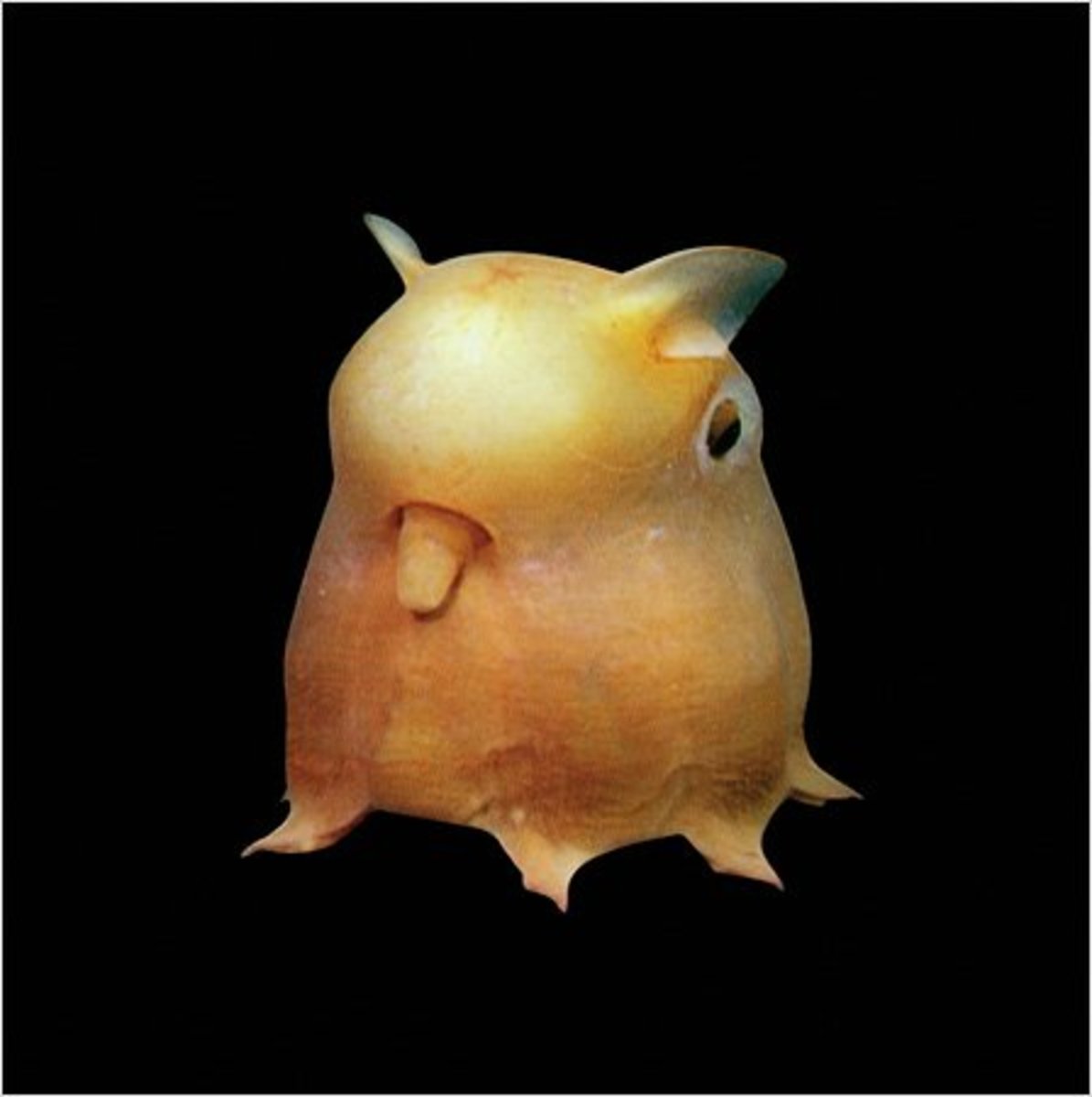
Grimpoteuthis species
This little guy can be found really, really deep in the ocean. By deep I mean 7000 meters deep. He's not called the Dumbo Octopus because of his intelligence, either. He uses his ears to swim. Why does this guy make the list? Because he's kind of cute, despite being used to swallowing his victims whole. No need to worry, he's only about 20 centimeters long, full grown. Scientists don't know all that much else about him.
8. Blobfish

Psychrolutes marcidus
Golly-gee, that's one ugly creature. What was evolution thinking?
You might guess that the blobfish isn't a fast swimmer. It doesn't even have to swim most of the time, as its body tissue is slightly less dense than water, allowing it to float effortlessly just off the bottom of the ocean, waiting for its dinner of microorganisms to float by. How does it survive not being eaten? By not being tasty. In fact, it's inedible to humans. It's still endangered though; overfishing of the ocean bottom leads to these guys being hauled out of the ocean at a fast rate.
To be fair, in its natural habitat the blobfish might look somewhat less hideous than these shapeless, decompressed victims that have been hauled to the surface; see the artist's drawing below.
Artist's Impression of Blobfish at Home
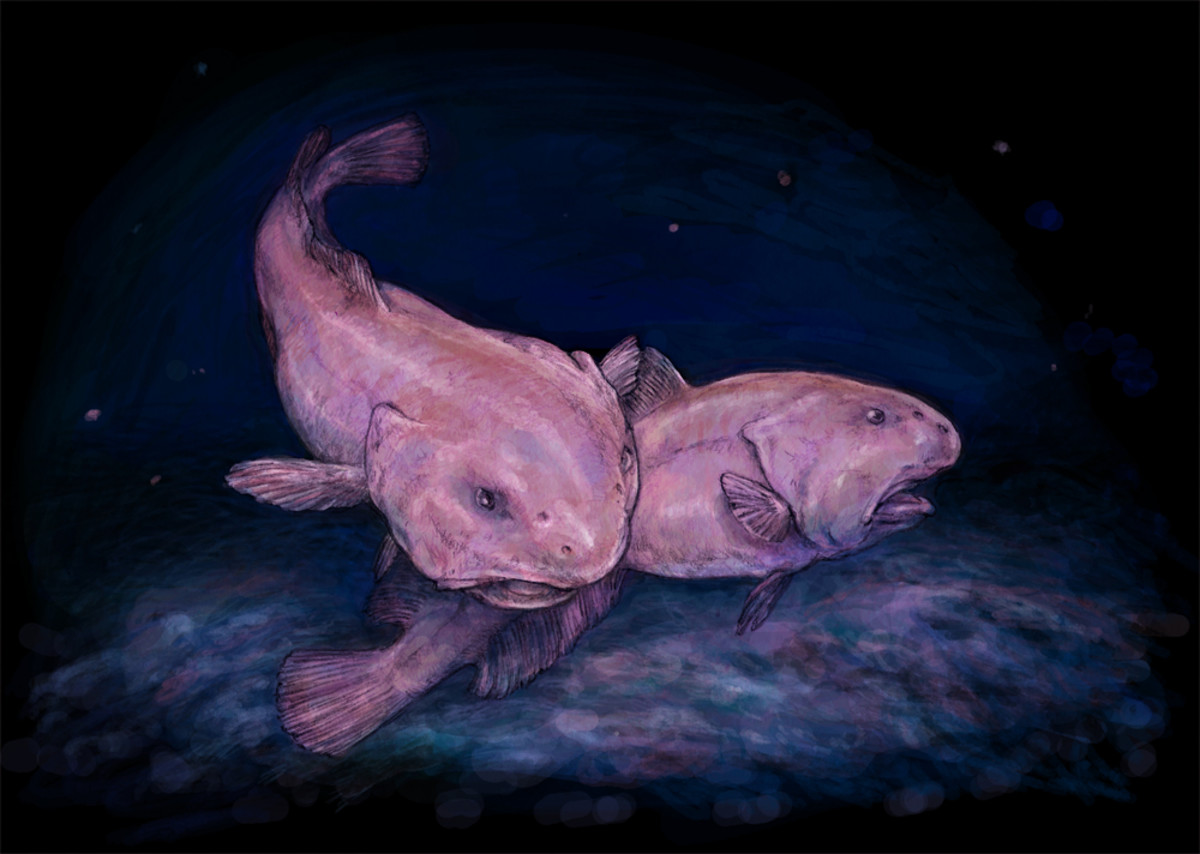
7. Kakapo
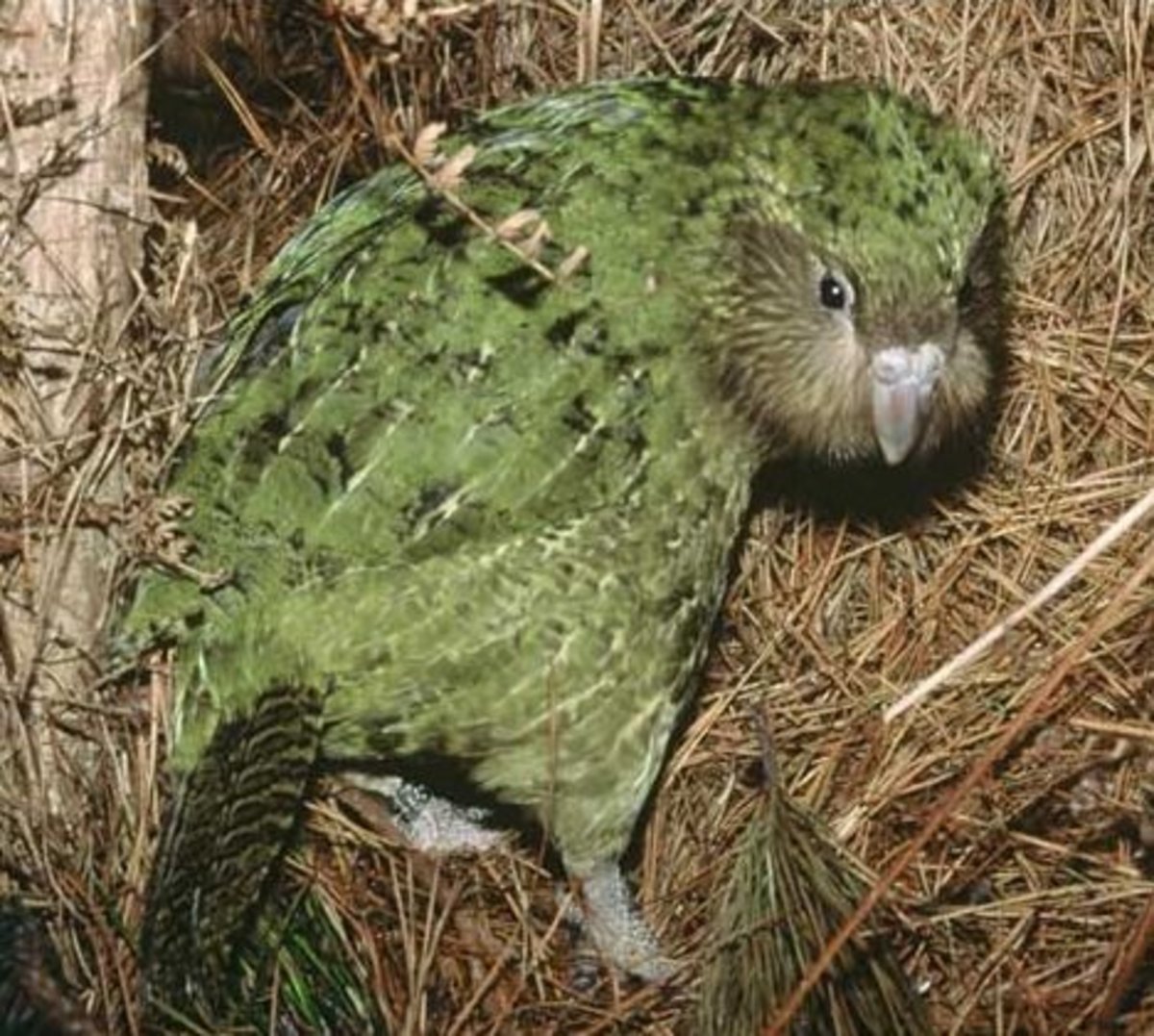
Strigops habroptilus
The kakapo is the world's largest parrot. It evolved into such a large and peaceful bird because of the former lack of mammalian predators in its island home in New Zealand. Among its qualities: it smells weird, barks like a dog, and is portly and nocturnal.
It is critically endangered (there are less than 200 left, and most of these individual kakapos have names). When Europeans brought dogs and cats over to New Zealand, these animals learned the kakapo's smell, and were able to find them with ease. Once again an example of humans messing with nature. Poor kakapos. At least it is fun to say their name.
6. Olm
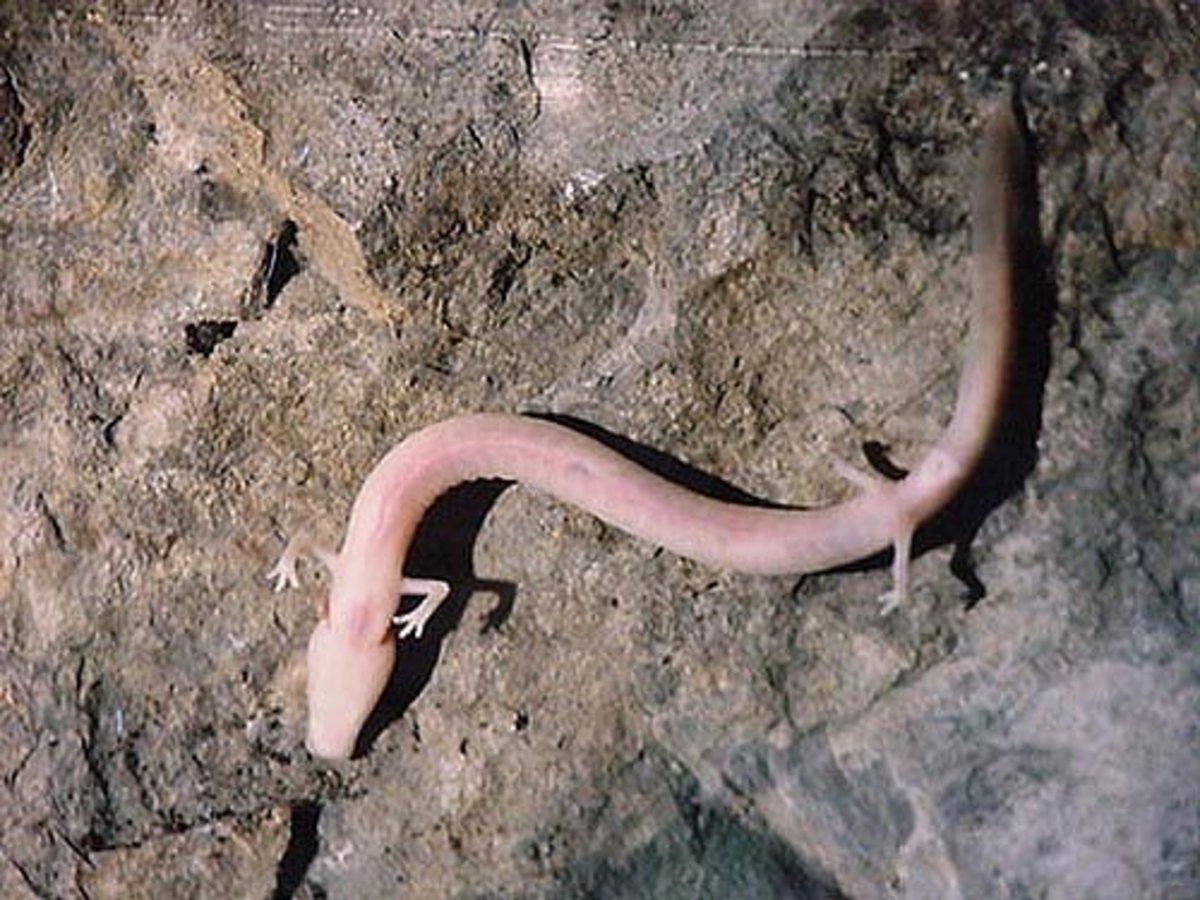
Proteus anguinus
Q: What has three toes on its front limbs, two toes on its back limbs, pale human-like skin, is blind, lives to 100 (some say only 60), lives in caves, and can go ten years without food?
A: You should have guessed from all those hints (and the subtitle) ... the olm.
This blind salamander of the limestone caves of southern Europe is not much like any other amphibian. The olm has a great sense of hearing and of smell. Its olfactory system is so well-made that it can sense how many little living things surround it. Many a fisherman became a believer in sea monsters after catching one of these creatures ... just check out the picture above.
5: Matamata Turtle
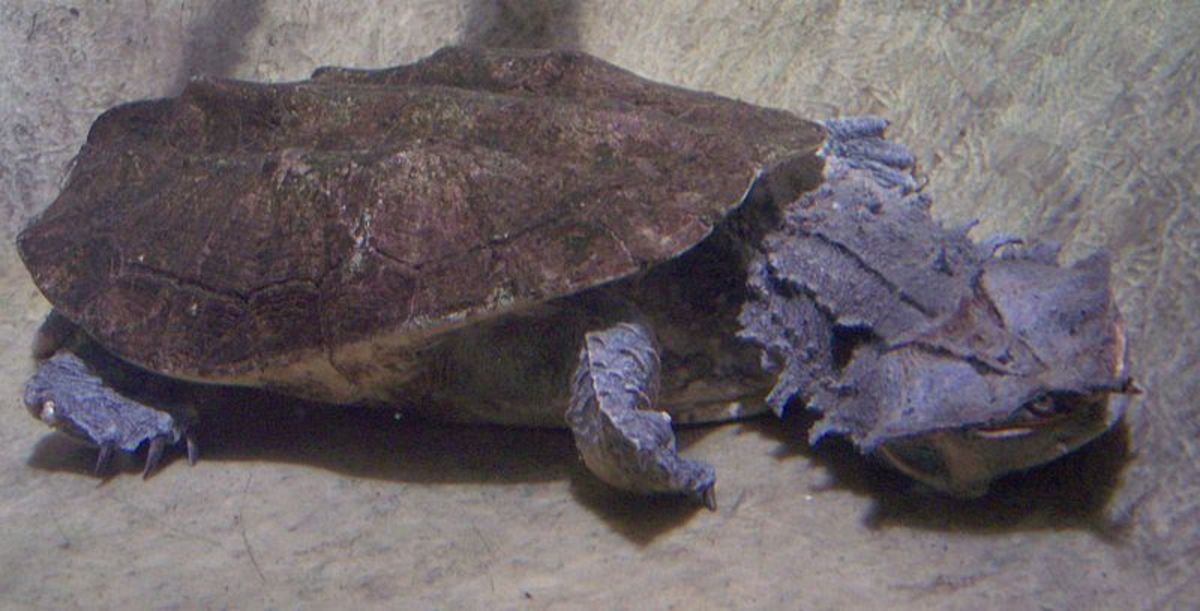
Chelus fimbriata
This South American freshwater turtle makes the list because he looks like a tank. The matamata looks bulletproof, fireproof, radiation-proof, and toughest of all, child-proof. I'm not sure about any of those claims though, as I didn't run into any support during my research. Though the shell and head look extremely tough, and probably are, they are meant for camouflage; the matamata is said to resemble a chunk of bark with dead leaves. From above, he would be very hard to see sitting on the bottom of a creek, and also a nasty surprise if you stepped on him. I say this as a person afraid of snakes and spiders. I can't imagine how the person who discovered this river monster felt.
3. Tarsier
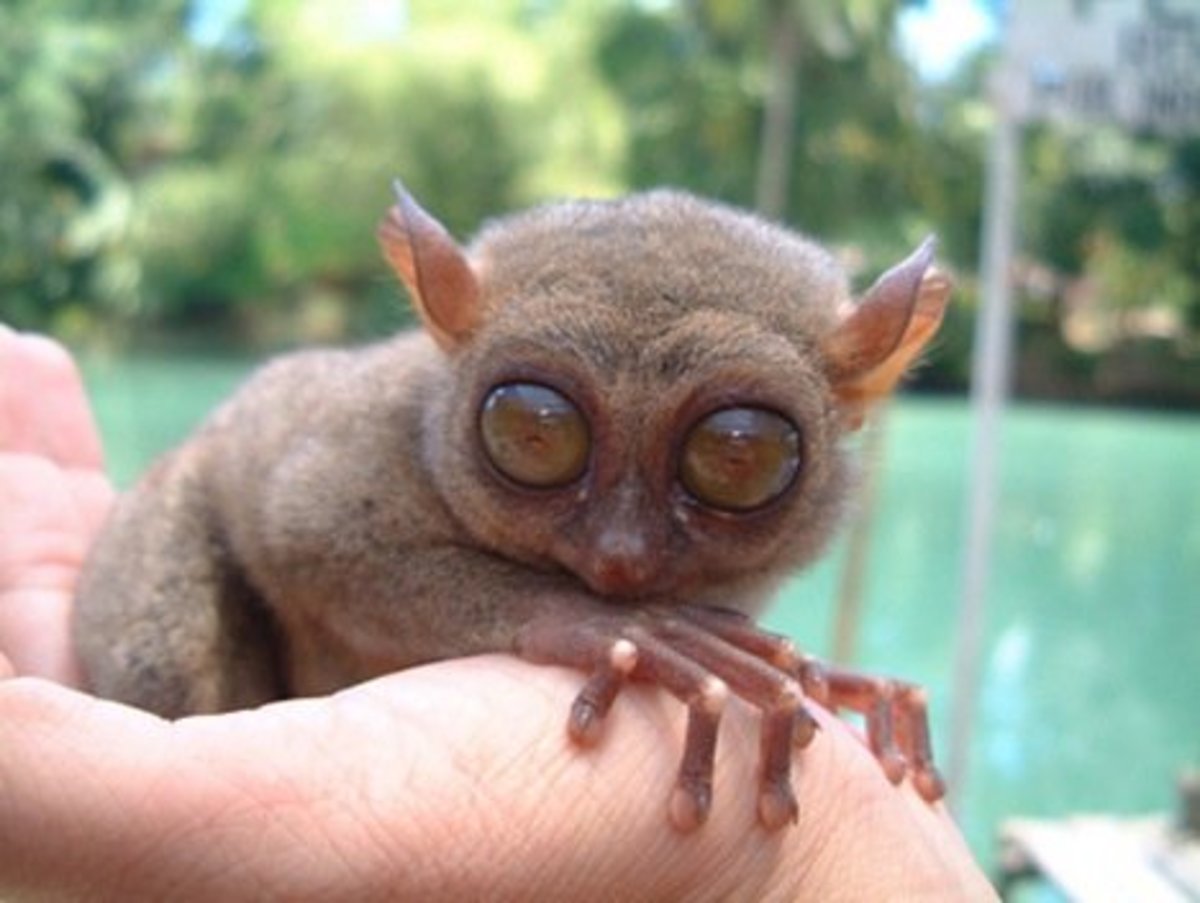
"
Family Tarsiidae
Tarsiers are interesting creatures.These little guys grow to be a whopping five inches. They eat insects and have been known to jump from tree to tree and eat birds.
Wait, what?
That's right. They're nocturnal, and move very, very fast using their bony fingers and long tail. Females usually have about one little baby tarsier per year. What else is unnatural about these creatures? They can twist their heads 180 degrees like an owl. If they were any bigger, I'd be terrified of them.
This once again proves that Mother Nature has more creativity than science fiction writers.
2. Flying Squid
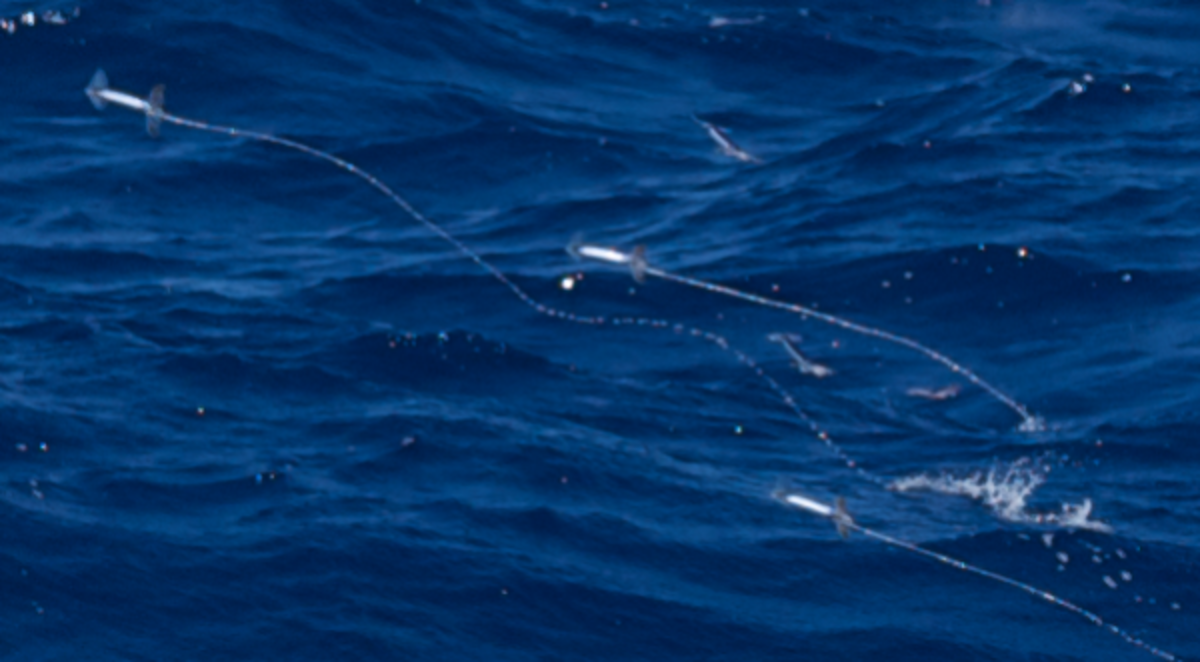
Several species, including Todarodes pacificus, Ommastrephes bartramii
Flying ... Squid?
I couldn't find much information on flying squid, because people have been mistaking them for flying fish. Only within the last 20 years was the flying squid seriously talked about in academic circles. If you readers have been on the water much, you know that flying fish just zoom by and it is hard to distinguish their finer features from a boat. Flying squid are even rarer, and zoom by just as fast.
Scientists recently confirmed that there is a flying squid known as the "red" or "neon" flying squid. But it's blue. We don't know how they jump out of the water, or why, or apparently even what color they are. More research needs to be done on these things.
Number 1 (and My Favorite): Darwin Bark Spider
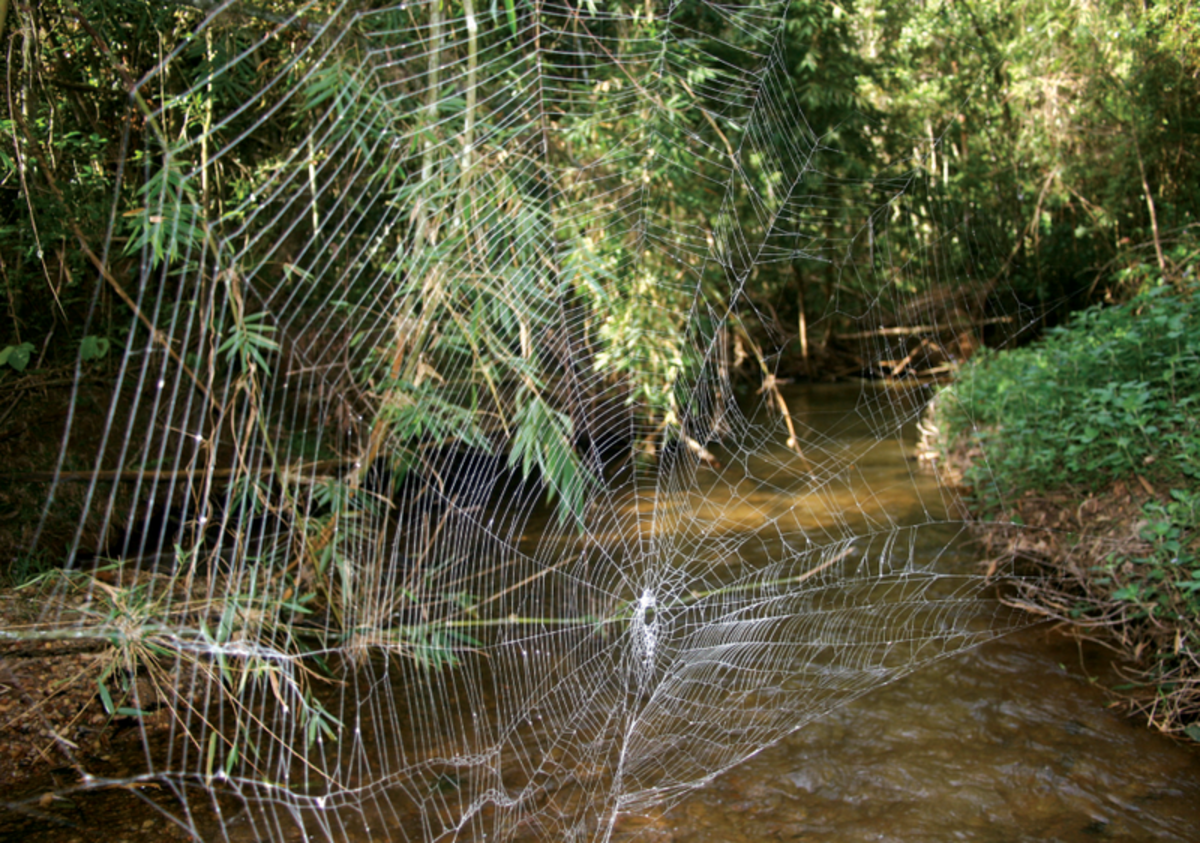
Caerostris darwini
Darwin's Bark Spiders were a recent discovery (2009) for the world at large; here are some pictures and discussion (in National Geographic) from the scientists who first documented them. Of all these creatures, they mystify me the most. A couple of facts: First, their silk is much stronger than any other spider's silk that has been studied. It is 10 times stronger than Kevlar (that stuff in bulletproof vests). Second, and probably related, they somehow string their webs across, not along, rivers...don't you have to have two people to string something across a river? Maybe they swim across, who knows. Their webs are the biggest and strongest spiderwebs known.
The best way to study them is by boat because that's the only way scientists can analyze their behavior from up close. Much about them is still unknown, because for a long time only local Madagascar rangers and tour guides knew about them.
They eat bees, dragonflies, and mayflies (up to 32 mayflies have been found in one web at a time). People wonder if their webs can catch birds, too.

No comments:
Post a Comment